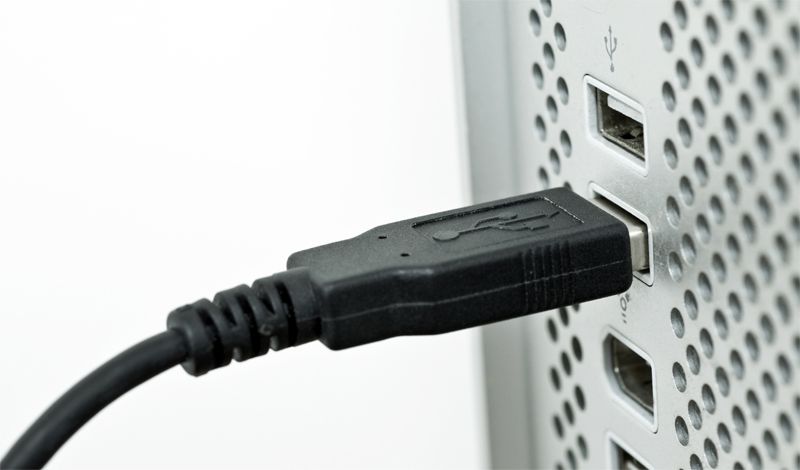SpaceX has launched 1265 Starlinks to date with another 60 awaiting launch this weekend. Thousands more are planned.



Researchers have developed a new data transfer system that is 20 times faster than USB 3.0.
This combines high-frequency silicon chips with a polymer cable as thin as a strand of hair. The system could boost energy efficiency in data centres and lighten the loads of electronics-rich spacecraft. Researchers presented their breakthrough at the recent IEEE International Solid-State Circuits Conference, held virtually.
“There’s an explosion in the amount of information being shared between computer chips – cloud computing, the Internet, big data. And a lot of this happens over conventional copper wire,” says Jack Holloway, who led the research. Holloway completed his PhD in MIT’s Department of Electrical Engineering and Computer Science last year and currently works for Raytheon.


MIT scientists demonstrate a hair-like plastic polymer cable that can transmit data 10 times as fast as USB.
How fast does data flow? The answer: not fast enough.
The search for more efficient data-transfer solutions to meet the ever-increasing demand for computation never ends. Even today, most data transmission happens via traditional copper cables, which are power-hungry, leading to a compromise between data exchange and energy consumed. Fiber-optic cables are an alternative, but they don’t work well with the silicon chips in our computing systems. Overcoming these limitations, while theoretically possible, can turn out to be prohibitively expensive, especially for electronics-rich applications like data centers, spacecraft, electric vehicles and so on.
A team of scientists at the Massachusetts Institute of Technology have recently demonstrated a plastic polymer cable that is a complementary solution; it takes the best of copper wires and fiber-optics while ditching their shortcomings. Thinner and lighter than copper, this cable is capable of data transfer speeds rivaling fiber-optic threads, while being compatible with silicon chips. The team, which presented its findings at the IEEE International Solid-State Circuits Conference in February, reported data-transfer speeds topping 100 gigabits per second.

SpaceX wants to begin connecting moving vehicles – from cars and trucks to jets and ships – to its Starlink satellite internet network, according to a request the company filed with the Federal Communications Commission.
“This application would serve the public interest by authorizing a new class of ground-based components for SpaceX’s satellite system that will expand the range of broadband capabilities available to moving vehicles throughout the United States and to moving vessels and aircraft worldwide,” SpaceX director of satellite policy David Goldman wrote in a letter to the FCC filed on Friday.
Starlink is the company’s capital-intensive project to build an interconnected internet network with thousands of satellites, known in the space industry as a constellation, designed to deliver high-speed internet to consumers anywhere on the planet.

SpaceX has launched another batch of its Starlink satellites — the usual complement of 60 of the low Earth orbit spacecraft, which will join the more than 1000 already making up the existing constellation. This is the fifth launch of Starlink satellites for SpaceX this year, and the twentieth overall.
Earlier this year, SpaceX opened up Starlink access to anyone in a current or planned service area via a pre-order reservation system with a refundable up-front deposit. The company aims to continue launches like this one apace throughout 2021 in order to get the constellation to the point where it can serve customers over a much larger portion of the globe. SpaceX COO and President Gwynne Shotwell has previously said that the company expects it should have coverage over much of the globe at a constellation size of around 1200 satellites, but the company has plans to launch more than 30000 to fully build out its network capacity and speed.
While SpaceX is making good progress on Starlink with its Falcon 9 launcher, it’s also looking ahead to Starship as a key driver of the constellation’s growth. Starship, SpaceX’s next-generation launch vehicle currently under development in South Texas, will be able to deliver to orbit 400 Starlink satellites at a time, and it’s also being designed with full reusability and fast turnaround in mind.

Starship SN10 successfully launched and landed at SpaceX’s testing site in Boca Chica, Texas. However couple of minutes after the landing Starship SN10 exploded on the landing pad.
► SpaceX Starlink 17 Mission Launch!
Set Reminder: https://youtu.be/8lwkQOa1yvg.
► Live footage provided by LabPadre with permission!
https://www.youtube.com/c/LabPadre.
🔔 Subscribe for LIVE EVENTS ALERT — http://eepurl.com/hhh3Rv.
👕 Check out our T-Shirts & Hoodies Store!
https://cosmosapiens-store.myteespring.co/
► Astronaut Spacewalk Earth Views.
Innovating And Investing In The New Space Age — Space 2.0 — Hélène Huby, VP, Orion-ESM, Airbus Defence and Space.
Hélène Huby is Vice-President of the Orion European Service Module (Orion-ESM), at Airbus Defence & Space.
Airbus Defence & Space is a division of the Airbus Group, a European multinational aerospace corporation and the world’s largest airliner manufacturer.
The Orion-ESM is the European Space Agency’s contribution to NASA’s Orion spacecraft, which will send astronauts back to the Moon, and beyond. It provides electricity, water, oxygen and nitrogen, as well as keeping the spacecraft at the right temperature and on course.
Hélène was previously Head of Innovation at Airbus Defence & Space where she grew a portfolio of over 50 new businesses, ranging from space data-based services to electrical-powered stratospheric drones, and was responsible for setting up Airbus Ventures, and an innovation center in Silicon Valley, for the Airbus Group.

Today, at a special AR/VR focused event held inside its virtual reality community platform Altspace, Microsoft showcased a new product aiming to provide their AR HoloLens platform and VR Windows Mixed Reality platform with a shared platform for meetings.
The app is called Microsoft Mesh and it gives users a cross AR/VR meeting space to interact with other users and 3D content, handling all of technical hard parts of sharing spatial multi-player experiences over the web. Like Microsoft’s other AR/VR apps, the sell seems to be less in the software than it is in enabling developers to tap into one more specialization of Azure, building their own software that builds on the capabilities. The company announced that AltspaceVR will now be Mesh-enabled.
In the company’s presentation, they swung for the fences in showcasing potential use cases, bringing in James Cameron, the co-founder of Cirque du Soleil and Pokémon Go developer Niantic.